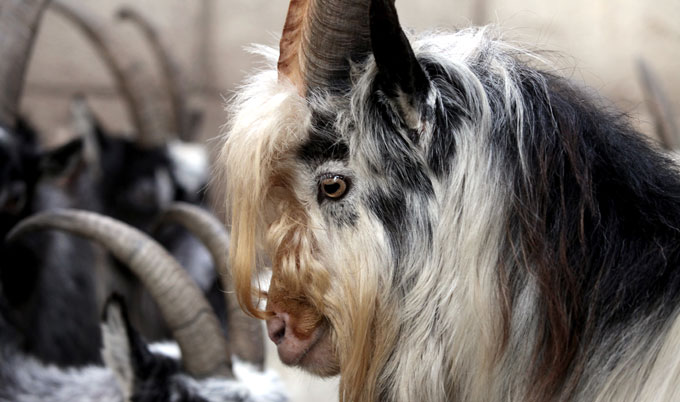Goats
Northumberland’s Neolithic Goats in the spotlight
Published on: 1 December 2017
Just 150 individuals remain of one of the UK’s oldest herds of wild animals.
Roaming the hills in the wilds of Northumberland, the Cheviot goats are one of the UK’s oldest and most elusive herd of wild animals.
Free from human interference since it first arrived over 7,000 years ago, the Cheviot goat is now under threat and experts from Newcastle University have been working to understand where they go and what they do to sort out areas of potential trouble.

Only 150 remaining
The focus of a special report on the BBC’s ONE Show this week, presenter Miranda Krestovnikoff was given rare access to the Northumberland National Park area where these ancient animals live, guided by Newcastle University expert Dr Richard Bevan.
“There are only about 150 of this population of goats remaining,” says Dr Bevan who has been studying the goats for the past 10 years and is based in Newcastle University's School of Natural and Environmental Sciences.
“That’s a very small population so if something were to happen they could very easily be wiped out.
“The aim of our project is to understand exactly how far the goats roam and how they use the local landscape, as well as recording when, where and how long they spend eating so we can advise on any future management.”
Unchanged for millennia
Self-sufficient and shy with striking long horns, the goats have roamed the Cheviots on Northumberland’s border since escaping from farms in Neolithic times.
The Newcastle research project has included fitting the wild goats with collars to allow the team to build up a very accurate picture of their behaviour.
“It’s astonishing to think that this population of goats arrived in this secluded valley about the same time that the wheel was being invented,” says Zoologist and TV Presenter Miranda.
“They’ve avoided being cross-bred to improve meat or milk yield and are now a walking connection to our Stone Age ancestors.
“Hopefully these small, shaggy creatures will continue to serve as a reminder of our own primitive beginnings for many millennia to come.”



